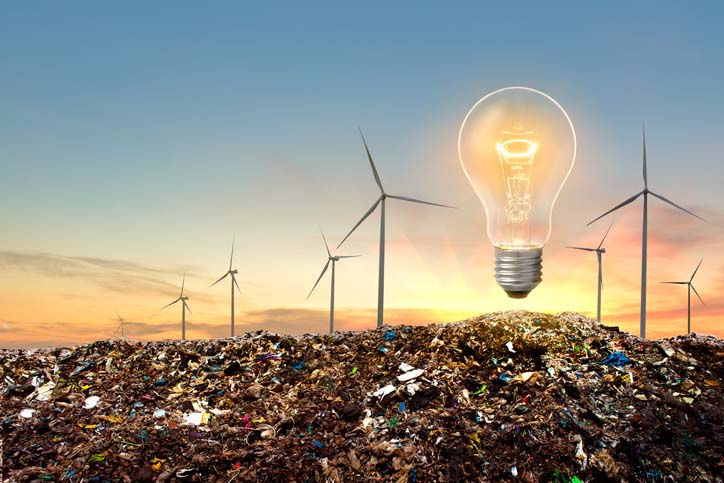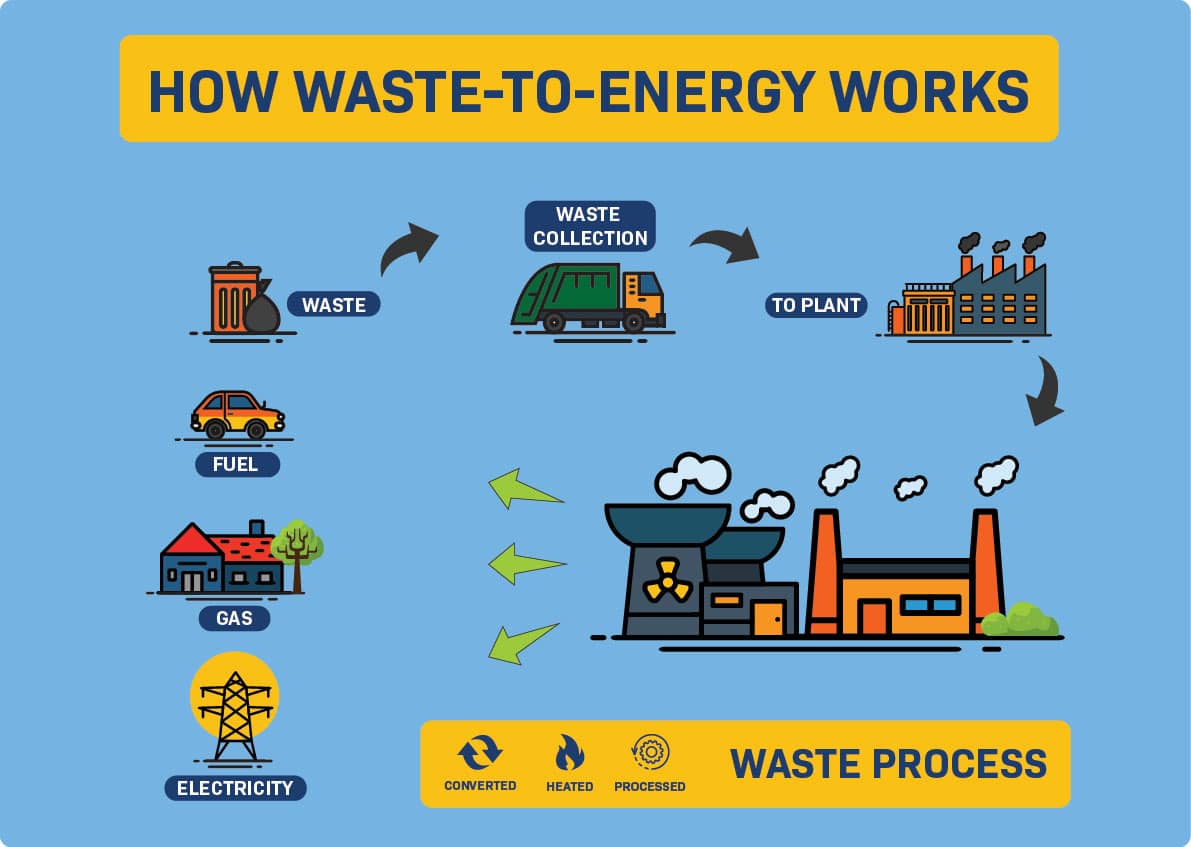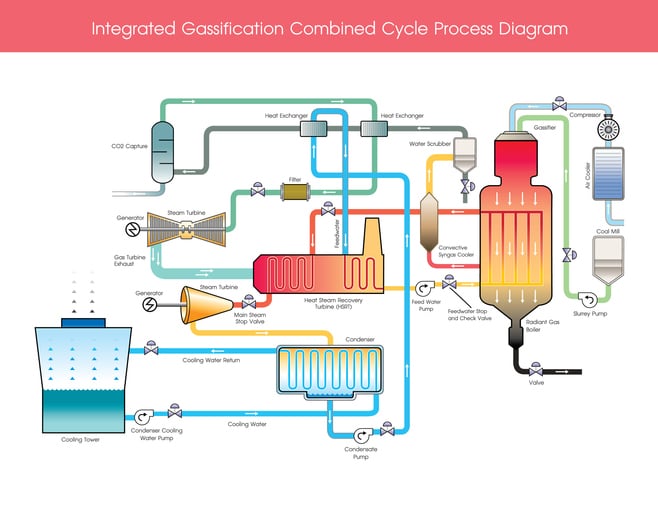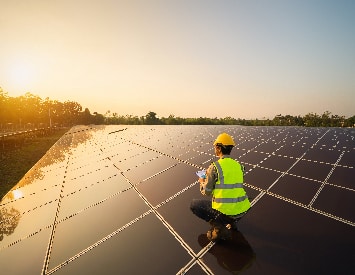As the world grapples with climate change, there is a growing interest in new technologies around waste recovery and waste conversion. Learn more about waste conversion technologies in this article.

There’s no escaping the fact that our world is buckling under the pressures of climate change, largely because of over-consumption and ensuing waste. With the global population currently sitting at 7.98 billion and projected to grow to over 8.5 billion by 2030, things can only get worse. That’s because as populations grow, so to do waste landfills and their greenhouse emissions
Greenhouse gas production (specifically methane) is arguably the most severe environmental threat posed by landfills around the world. According to the United Nations Intergovernmental Panel on Climate Change, landfills account for about 90 percent of greenhouse gas emissions from the entire waste sector. Stakeholders agree that diverting waste that is bound for landfills and putting it to good use through waste conversion and waste recovery, is an obvious means of conserving our environment and bolstering climate protection.
But how can we achieve this in a way that is not only economical but also sustainable and environmentally friendly? The answer, it would seem, are waste-to-energy technologies that can convert municipal and industrial waste into clean and renewable energy while reducing the impact of landfills on our environment.
What Are Waste Conversion Technologies?
Waste conversion technologies (WCTs) are non-incineration methods used to turn trash in treasure by converting the non-recyclable parts of municipal solid waste streams into fuels, industrial chemical feedstocks and electricity.
Conversion technology facilities can use several process technologies, including: anaerobic digestion, gasification, pyrolysis, thermal depolymerization and transesterification. Three types of conversion pathways or processes: biochemical, thermochemical and physicochemical can define these technologies.
The following five technologies are some of the most innovative approaches in waste recovery and conversion:

Gasification
Considered a much better option to the older method of incineration, gasification is a commercially proven process that converts hydrocarbons such as petroleum coke, biomass and coal into a combustible synthetic gas (syngas), which can then get processed to produce electricity, hydrogen, fertilizers and chemicals, and liquid fuels. Rather than using a fuel, the process uses municipal waste as a feedstock and converts it into syngas under high temperatures, which can then get used as an alternative to natural gas, for fertilization and as transport fuel.

Plasma arc gasification
This waste-to-energy technology uses a plasma torch at extremely high temperatures (7,000 ºF) to break down the feedstock such as biomass, coal and municipal waste into the same syngas mentioned in the gasification process. The breakdown of molecules, and change of chemical composition from plasma torching is also referred to as plasma pyrolysis.
However, a downside of the plasma arc method is that electrical outputs are lower since a large portion of electricity it generates is used to operate the plasma torches. Although it should also be noted that the process also produces a rather valuable glass-like byproduct to be used in construction.
Anaerobic digestion
It is a process (taking place in a sealed reactor) in which bacteria break down organic matter such as wastewater biosolids, animal manure, and food wastes in the absence of oxygen to create biogas digest. Although mostly composed of methane and carbon dioxide, trace amounts of contaminants, water vapor and other gasses; the resultant anaerobic digestion biogas is used as electricity, heat and transport fuel. The other product of biogas (digestate) is a liquid of a solid substance that can be used as a building material, animal bedding and as fertilizer.
Hydrothermal carbonization
Also referred to as “aqueous carbonization at elevated temperature and pressure”, this waste conversion technology uses a thermochemical process (the use of heat) to turn organic waste into structured carbons (hydro-char) that are like fossil fuels that often take 50,000 to 50 million years to form naturally. Besides being used as a fuel, this hydro-char can also replace coal and to enrich soil, while we can use feedstock for gasification. A notable advantage that hydrothermal carbonization has over other thermochemical technologies such as pyrolysis is that it’s faster, since no pre-drying of feedstock are needed

Dendro liquid energy
Invented in Germany, its efficiency is four times higher than other waste-to-energy technologies. Its near-zero emissions in the process of electricity production, and no nuisances nor effluent issues at the site makes this waste conversion technology the most promising.
Working with both wet and dry waste to generate clean fuels, dendro liquid energy plants operate at moderate temperatures between 150°C and 250°C, making them about four times more efficient in generating electricity when compared to other waste conversion solutions. Its ability to work with dry and wet waste to produce clean fuel plus its low operating cost makes this technology a perfect solution for various municipalities.
Market Impact of Waste-To-Energy Tech
The usefulness of waste conversion technologies is increasingly being acknowledged by nations hard-pressed to reverse the effects of greenhouse emissions. This is evidenced by the uptick in use of these technologies around the globe. There are over 1700 thermal WtE plants worldwide, with more than 80 per cent of thermal WtE plants found in developed countries: led by the United States, Japan, Germany and France. It has and continues to also receive considerable attention in developing countries and plants are emerging in developing countries in the Asia Pacific, including China, Thailand, the Philippines, Indonesia and Myanmar.
Growing interests in this technology has resulted in the Global Waste to Energy Market currently sitting at around USD 50Compound annual growth rate.31 billion and is expected to grow to an estimated USD 103.95 billion by 2027, growing at a compound annual growth rate of close 16 percent.
Waste Conversion Technologies And The Way Forward
The Paris Agreement, a legally binding agreement that brings all nations into a common cause to combat climate change, aims to limit global warming to below 35,6 °F, preferably to 34.7 °F by 2030.
However, recycling, zero-waste efforts and efficient use of renewable energy are far from widespread and developed in most of the world.
Fortunately, the technologies for waste conversion are coming along fast and, despite some minor drawbacks, they are being recognized as a much-needed step in addressing landfills and their greenhouse emissions, and converting waste into sustainable products to help reduce our carbon footprint.

If you want to learn more about the content of the UN Paris Agreement read here.
Here at EIT we also offer courses that aim to equip students into realizing the UN Paris Agreement in the field of engineering you can find our renewable energy courses here.
References:
1. United Nations. World Population Prospects 2019: Available from: https://www.ipcc.ch/
2. Towards a resilient future for all: Achieving Agenda 2030 in the context of slowing population growth: https://china.unfpa.org/en/news/22071201 Science Direct: https://www.sciencedirect.com/topics/engineering/thermal-treatment-system#:~:text=Dendro%20liquid%20energy%3A%20This%20biological,effluent%20issues%20at%20the%20site.
3. Science Direct: https://www.sciencedirect.com/topics/engineering/thermal-treatment-system#:~:text=Dendro%20liquid%20energy%3A%20This%20biological,effluent%20issues%20at%20the%20site.
4. The Valuer: https://www.valuer.ai/blog/top-innovative-technologies-in-waste-to-energy
5. Outlook on the Waste to Energy Global Market to 2027 – Increasing Development in Incineration and Gasification Technologies Presents Opportunities: https://finance.yahoo.com/news/outlook-waste-energy-global-market-120300456.html
6. United Nations Environment Program: file:///C:/Users/hayden.h/Downloads/WTESum.pdf


